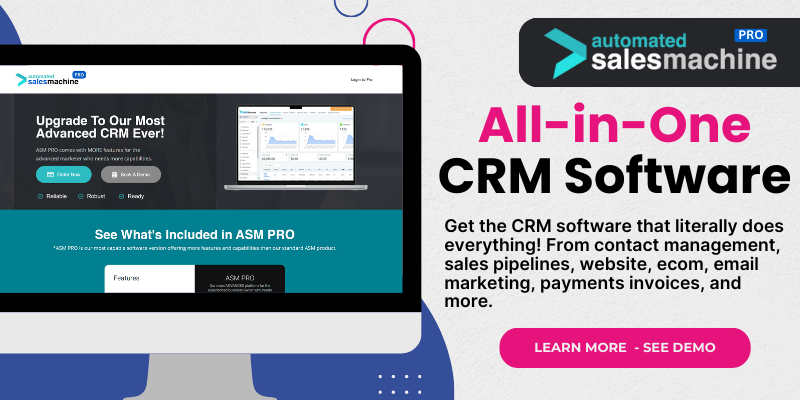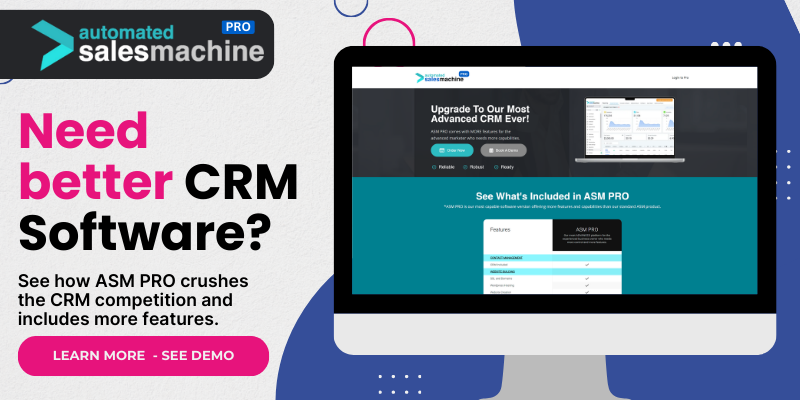Understanding Customer Relationship Management (CRM)
What is CRM?
Let’s face it: juggling relationships with customers is tricky. That’s where CRM swoops in to save the day! At its core, CRM software helps businesses manage their interactions with customers and potential customers. It’s all about making those connections count, and yes, that means tracking the little details.
From storing customer information to recording interactions and analyzing data, CRM does all the heavy lifting to keep customer relations healthy. I remember when I first started using CRM software; it truly felt like having a personal assistant that never forgets a thing!
This streamlined approach isn’t just beneficial for the employees; it significantly improves customer satisfaction too. When a customer feels valued and understood, you instantly build loyalty, and we all know that’s pure gold in business.
The Importance of Choosing the Right OS
Now, let’s be real. The OS (Operating System) you pick can influence the CRM software experience significantly. Whether it’s Windows, macOS, or Linux, each OS can affect the features and usability of the CRM tools available. Like choosing the right tool for the job, you need to find the right OS to run your chosen CRM seamlessly.
I learned the hard way that not every CRM software plays nice with every OS. In my early days, I found myself stuck with a CRM that had bugs on my OS—absolute chaos. So, putting some thought into your OS choice can save you a hefty dose of frustration down the line.
Plus, certain CRMs function better with specific systems. So, if you’ve got a preference for macOS, some software won’t give you the functionality you need, while Windows might go above and beyond. Make your OS decision wisely!
Benefits of CRM Software Across Different Operating Systems
One great thing about CRM software is that most of the popular tools are designed to be cross-platform. JSON or API integration can allow you to use the software seamlessly across different operating systems. Having tried quite a few CRM options, I can say that flexibility is a huge win!
Different operating systems also have different advantages. For instance, Windows-based CRM software might be more feature-rich due to its wider developer support, while Linux offers powerful customization options and typically runs on low-cost hardware. Choosing the right OS ultimately affects both the performance and scalability of your CRM system.
When I decided to give a Linux-based CRM a shot, the flexibility I had was incredible! It truly made me appreciate how the right OS could enhance the capabilities of my chosen CRM tool.
Popular CRMs for Various Operating Systems
Windows
If you’re running a Windows system, you’ll be delighted to know there’s a wide array of CRM software tailored just for you! Platforms like Salesforce and HubSpot offer robust functionalities that can elevate your business operations to new heights. I’ve played around with both of them in my past experiences—trust me, they deliver!
With easy-to-use interfaces and extensive integration options, they can help you manage leads, track performance metrics, and keep the communication flowing smoothly. Starting with any of these solutions can lead you on a solid path to improving customer relationships.
However, it’s essential to consider your business size and sector when choosing. Some CRMs are more catered towards small businesses, while others are packed with features suited for larger enterprises.
macOS
For the Mac lovers out there, there’s a treasure trove of CRM options that can fit like a glove in your ecosystem! Platforms like Copper and Pipedrive are fantastic options. And boy, is the integration with Google Workspace impressive! I can’t tell you how much easier it makes managing my emails and contacts.
These tools not only enhance productivity but also provide deep analytics, allowing for smarter decision-making. I once converted a lead into a loyal customer using Pipedrive’s insightful reporting, which totally made my day!
It’s magical when your CRM syncs with your calendar to keep track of meetings. It feels less like work and more like running a well-oiled machine, which we all strive for, right?
Linux
Oh, Linux—such a hidden gem! While some folks might think it’s limited, you’d be surprised at the fantastic CRM solutions you can find, such as SuiteCRM and Odoo. These platforms stand out because of their openness; being able to customize them ends up giving you a competitive edge.
Having used SuiteCRM for a while, I appreciated how it allowed me to mold the functionalities to my needs. If you’re technically inclined, Linux-based CRMs can take your CRM game to a whole new level.
Moreover, they tend to follow a lower-cost structure since open-source software can reduce overall expenses. As a small business owner, I found this refreshing—more money to invest elsewhere!
Exploring CRM Integration with Other Tools
Benefits of Integration
Integrating your CRM with other tools can feel like unlocking a hidden level in your software! It allows you to share data seamlessly across platforms, ultimately boosting productivity. For instance, integrating your CRM with email marketing tools can provide a treasure trove of insights about your campaigns.
In my experience, connections like this help to ensure that you’re not only capturing leads but nurturing them effectively. You can set up automated workflows that notify your sales team when a lead opens an email, eliminating manual checks!
Additionally, CRM integration helps track customer interactions effectively. You can visualize the entire customer journey from the moment they land on your website to their current standing. Trust me, that’s a game changer for tailoring your marketing efforts!
Popular Integration Options
Just to throw some names out there, tools like Zapier and Integromat have become incredibly popular for CRM integrations. They act like glue, connecting various apps without needing any programming knowledge! That means if you wish to funnel leads from your website straight into the CRM, it’s totally doable.
Using such integration tools has streamlined my workflow significantly. I remember one instance where I integrated my CRM with a project management tool, and it transformed how I tracked leads through projects. Every task was connected, making sure nothing slipped through the cracks.
As a result, managing lead-to-client conversions became quicker and more organized. If you’re not exploring these integration options, you’re truly missing out!
Choosing Your Integrations Wisely
However, while diving into integrations sounds exciting, choose them wisely! It’s crucial to understand what your business needs before picking partnerships. Sometimes, fewer integrations that work effectively can be more beneficial than many that create chaos.
I’ve been on both sides of the fence. During my initial phase, I tried integrating too many tools to the CRM, which ended up creating confusion instead of clarity. It took a bit of trial and error, but I eventually found the sweet spot.
So, take it slow, assess your business processes, and see where integration can actually bring value. It’ll save you a lot of headaches down the line!
Final Thoughts on Choosing the Right OS for Your CRM
Importance of Research
As we wrap up this exploration on OS and CRM software, I can’t stress enough the importance of doing your research. Take the time to assess your business’s specific needs and how different CRMs interact with various operating systems. It’s like a foundation for your future success!
I’ve seen numerous businesses struggle because they jumped in without exploring their options first. So, grab a coffee, take a deep breath, and dive into understanding what’s best for you.
Engage in forums, read reviews, and perhaps even reach out to other users. You’ll thank yourself later when you’re living a smooth CRM experience.
Being Proactive
Being proactive is the name of the game. Technology evolves rapidly, and if you allow yourself to stay behind, your competitors will probably overtaking you. Regularly evaluating your CRM needs and the OS you’re using could keep you one step ahead.
I’ve learned to make it a habit of revisiting my tools and understanding how they’re performing against my goals. For example, simply upgrading to a newer version of a CRM software could offer you game-changing capabilities!
So, take initiative, plan for upgrades or changes, and ensure your systems are optimized for success!
Building Stronger Customer Relationships
Ultimately, choosing the right OS for your CRM software translates directly into how well you can build and maintain relationships with your customers. The goal here is to utilize these tools to elevate your customer’s experience, not to complicate it.
Constantly strive to improve and adapt your systems based on feedback and performance data. Over the years, I’ve found that even small improvements can lead to huge benefits for customer satisfaction.
So, in conclusion, your choice of CRM software paired with the appropriate OS can empower you to create astounding customer experiences. Now go out there and make those relationships flourish!
FAQ
1. What is CRM Software?
CRM (Customer Relationship Management) software helps businesses manage interactions with customers and potential leads. It organizes customer data, streamlines processes, and improves overall customer satisfaction.
2. Why is the choice of OS important for CRM software?
The OS can affect the software’s compatibility, performance, and available features. Different systems may support different integrations and functionalities necessary for effective CRM use.
3. What are some popular CRM options for Windows?
Some great CRM options for Windows users include Salesforce, HubSpot, and Zoho CRM. Each offers robust features that can cater to various business needs.
4. Can I use CRM software on Linux-based systems?
Absolutely! There are several CRM software options available for Linux, like SuiteCRM and Odoo, which can be customized for different business requirements.
5. How do I know which CRM integrations are right for me?
Assess your current business needs and what processes you’d like to streamline. Start with a few key integrations and expand as necessary to avoid overwhelming your system.

